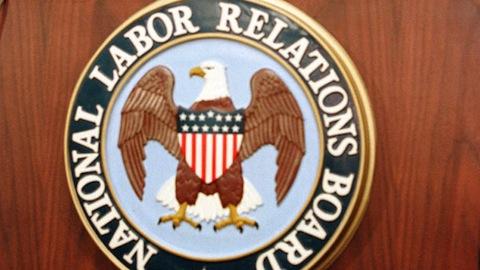In a legal win for workers and unions, the National Labor Relations Board is sharply curbing employer justification for hiring and using “permanent replacements” for workers forced to strike for economic reasons.
In a 2-1 decision on May 31, involving the Piedmont Nursing Home in Oakland, Calif., and SEIU/United Health Care Workers West, the board majority said employers must prove they do not have other, unlawful, motives for permanently replacing striking workers.
The decision is extremely important. Especially since the 1981 PATCO air traffic controllers strike – when President Ronald Reagan fired all the controllers, who struck over safety issues, and permanently replaced them – employers routinely fire striking workers and bring in “permanent replacements,” or threaten to, sometimes even before a strike begins.
That replacement threat in turn has had a chilling effect on the right to strike, which is theoretically legal under U.S. labor law. The number of strikes has dropped precipitously.
In 1938, Board Chairman Mark Gaston Pearce wrote, the Supreme Court ruled firms could permanently replace workers who strike for economic reasons if the companies establish “a legitimate and substantial justification for failing to reinstate striking employees by showing the strikers’ positions have been filled by permanent replacements.”
“However, the permanent replacement of strikers is not always lawful,” Pearce pointed out. “The board will find a violation” of labor law “if it is shown that, in hiring the permanent replacements, the employer was motivated by ‘an independent unlawful purpose.’”
The catch, Pearce said, was that over the years since 1938, the board and the courts had not enforced that standard, even though the justices reinforced it in 1964. Now, he said, the board will require employers to prove they lack illegal motives for replacing workers.
Neither the AFL-CIO nor the Republican-run House Education and the Workforce Committee immediately reacted to the board’s ruling in American Baptist Homes and United Health Care Workers-West, the official name of the NLRB case.
Pearce explained that nothing in the 1938 Supreme Court ruling or a 1964 High Court decision reinforcing it “suggested the employer’s right was absolute, i.e., that an employer could lawfully replace economic strikers even if it did so for a purpose prohibited by the act.”
In the 1964 decision, the justices said that “When specific evidence of a subjective intent to discriminate or to encourage or discourage union membership is shown, and found, many otherwise innocent or ambiguous actions” normal in business – such as permanent replacements -- “may, without more, be converted into unfair labor practices.”
For a company to hire such permanent replacements, the board ruled in American Baptist Homes, it must prove it does not have “an independent unlawful purpose” for doing so.
Testimony from the nursing home’s own executive director and its counsel shows “two reasons for its decision to permanently replace strikers: To punish the strikers and the union and to avoid future strikes. We find both reasons are independently unlawful within the meaning of” both Supreme Court cases, particularly the second one, Pearce said.
“This statement evinces an intent to punish the striking employees for their protected conduct, and plainly reveals a retaliatory motive prohibited by the” National Labor Relations Act, he stated.
The nursing home also decided to permanently replace the striking SEIU members because its executive director “assumed the permanent replacements would be willing to work in the event of another strike” and the nursing home did not want to again have to spend money to hire more temps and permanent replacements.
Pearce said the nursing home’s motive is clear from its attorney’s statement to the union that it hired permanent replacements “because it ‘wanted to avoid any future strikes, and this was the lesson they were going to be taught.’ This evidence establishes an additional independent unlawful motive, specifically a desire to interfere with employees’ future protected activity,” the right to strike.


Spread the word